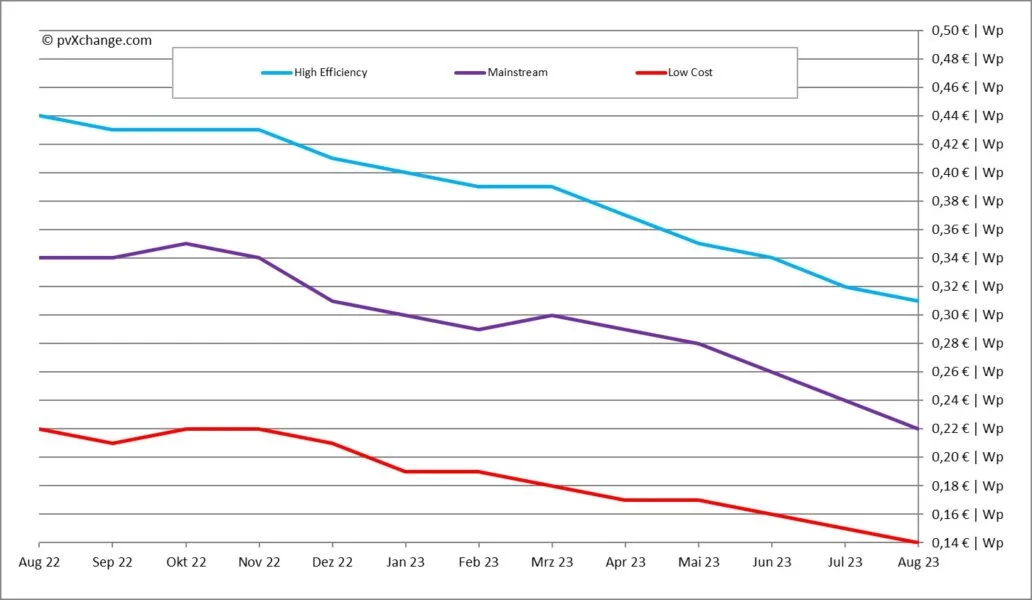.24 USD / W ! It would be to get those prices as a regular human here in the US - I’m seeing at least double that (even before shipping).
Signature had hyundai panels for 31c/W with flat rate shipping above a certain order. BOS for off grid or grid agnostic is another 25c - 50c/W and storage for $280/kWh
It’s a Democratic energy source, no oligarchs can profit from them and decide for their price.
manufacturers could form a cartel. Or one of them could be a monopolist.
There are so many manufacturers across the entire globe, and it’s not something country specific due to the availability of some underground fuel like gas, oil or uranium sources, that I find it unlikely to happen
That’s interesting! In 2017 it was still 0.50$/w and solar pretty much was the cheapest form of electricity. With huge demand I thought maybe prices would stabilize, but it’s awesome that they’re still falling. We might literally see solar panels everywhere in the future and near free electricity, at least during sun hours. Imagine installing an AC along with a couple of these and setting the AC to run when they are providing power. Free cool air when it’s needed.
The sun is always up somewhere. I haven’t seen any numbers on the cost to implement compared to alternatives like battery or pumped hydro storage, but in theory, a global power grid with enough transmission capacity could run entirely on solar.
Well a superconducting loop (even with liquid nitrogen costs/inefficiencies) would enable a global grid with quite minimal energy loses and reduce the amount of energy storage needed to sustain a stable grid even in the face of failures and disruptions.
The big problem tends to do with harmonization of energy grid standards.
My understanding was that most long distance transmission is high voltage DC anyway, so the frequency of interconnected grids should be irrelevant in that case
harmonization of grid standards is more than just frequency (it is mostly policy paperwork and the replacement of non-compliant equipment or the installation of conversion equipment) but you are correct high voltage DC is used for long distance power transmission. There are also details such as who is responsible for paying for what, where things are to be connected and various other bureaucratic details.
There was a bit of an increase over covid. Probably don’t expect it to be monotonic, but 7% p.a. drop is the trend.





